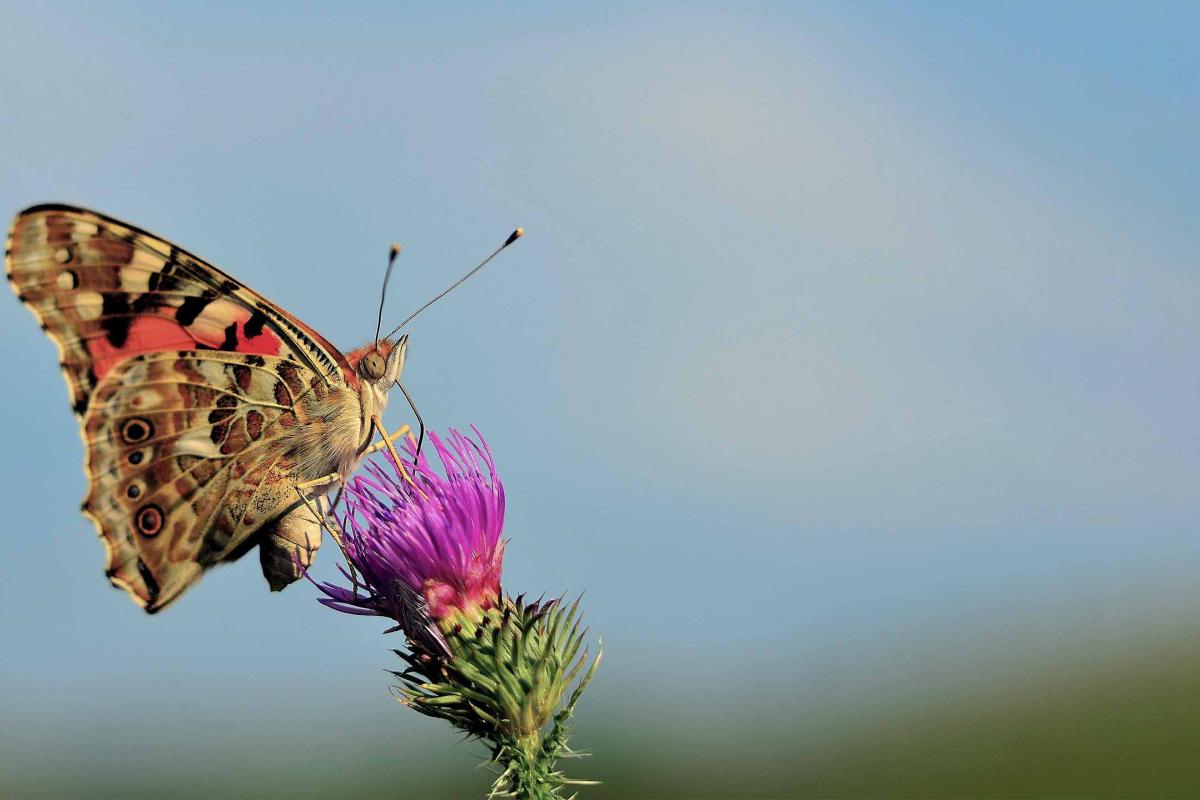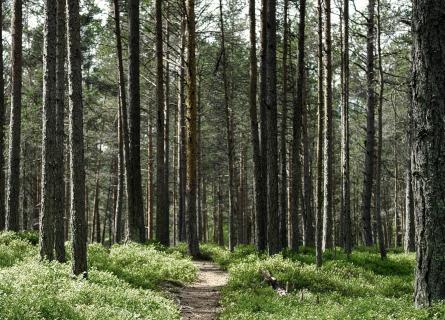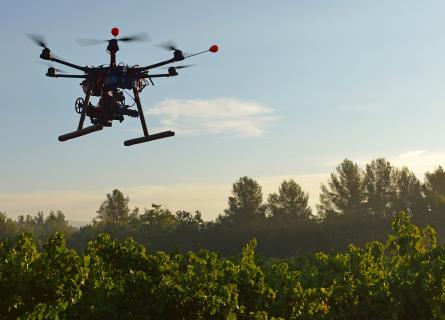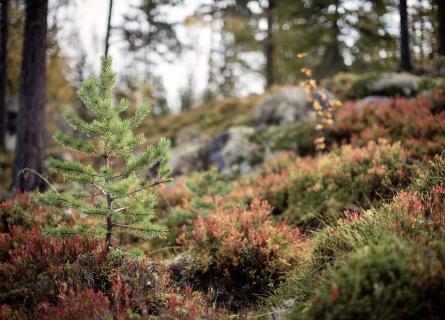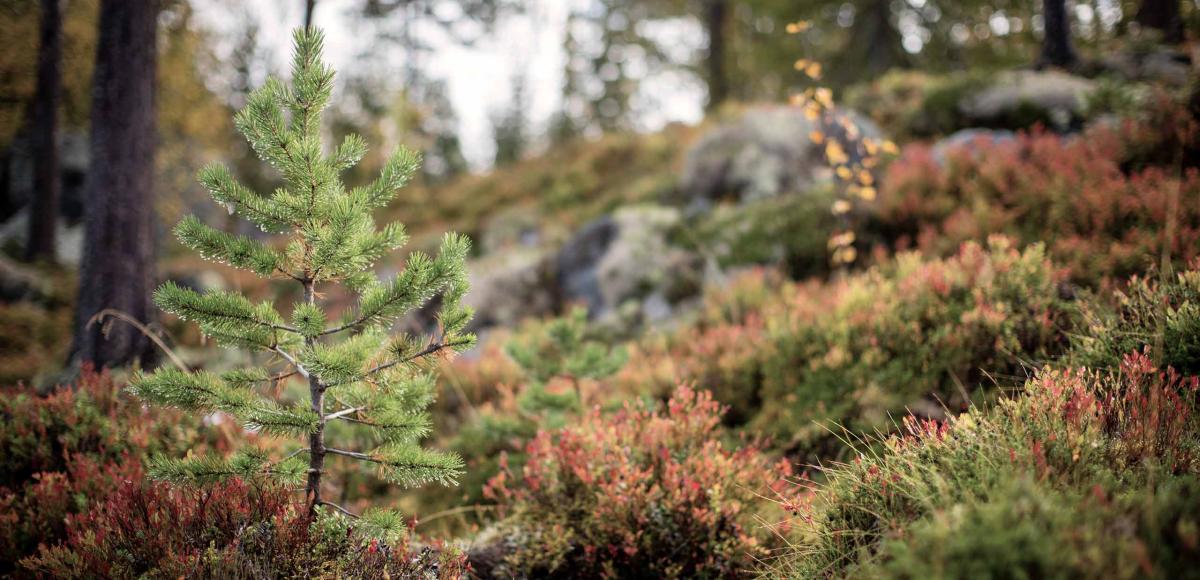
Back to Biodiversity
Biological diversity, the variety of life on Earth, plays a critical role for all life.
Biodiversity maintains the functionality of ecosystems and provides ecosystem services to nature and society. Ecosystem services are critical for economic development and human wellbeing.
According to the World Economic Forum, over half of the world's GDP is moderately or highly dependent on nature. Biodiversity loss, on the other hand, is a great risk for nature and our society.
The World Economic Forum’s 2022 Global Risks Report ranks biodiversity loss and ecosystem collapse as one of the top five threats humanity will face in the next ten years.

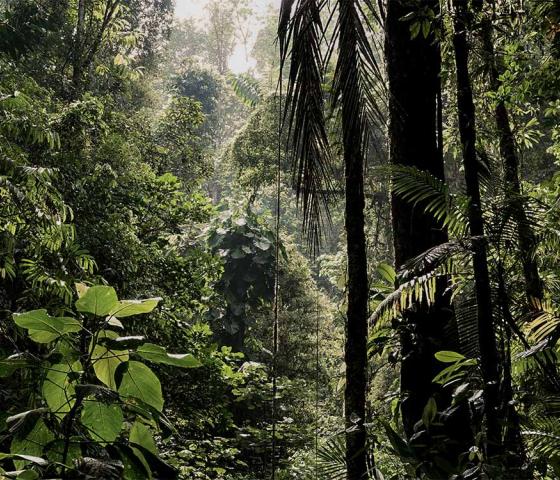
Our challenge
We are facing an accelerated rate of biodiversity loss due to direct and indirect human impact. This process disrupts ecosystem services and reduces natural capital. According to The Dasgupta Review, the value of natural capital depleted by nearly 40% per capita between 1992 and 2014 while the global GDP growth was 3.6%/a.
The biodiversity crisis is highly complex and multilayered. Biodiversity involves several levels of data, including spatial information on habitats, but also on species and genetics – all of them interdependent.
Small changes in the system can have large-scale negative impacts. This makes biodiversity challenging to measure and monitor even with high requirements for collecting and analysing appropriate data.
One of the main reasons for the decline is that the monetary value of ecosystem services is not adequately recognised in most decision-making processes, even though the annual benefit of ecosystem services is estimated to be USD 125-140 trillion. Furthermore, unlike climate, biodiversity is not yet similarly regulated by a binding global framework such as the Paris Agreement.
Close interrelation
Forests are one of the most significant sources of biological diversity. They are home to a major share of animal and plant species in terrestrial ecosystems. Forest ecosystems also co-function with other ecosystems and provide a variety of services.
The richness of forests is their versatility. Forest types vary according to climatic conditions - from tropical forests to boreal forests and from natural forests to managed forests and plantations, all with varying scales of human intervention.
Being havens for biodiversity, forests also provide direct values and benefits to society that range from renewable raw material production and carbon sequestration to aesthetic and cultural values. Benefitting from many of these values often requires human intervention. Forest management changes the natural development of forests and can impact biodiversity either positively or negatively.
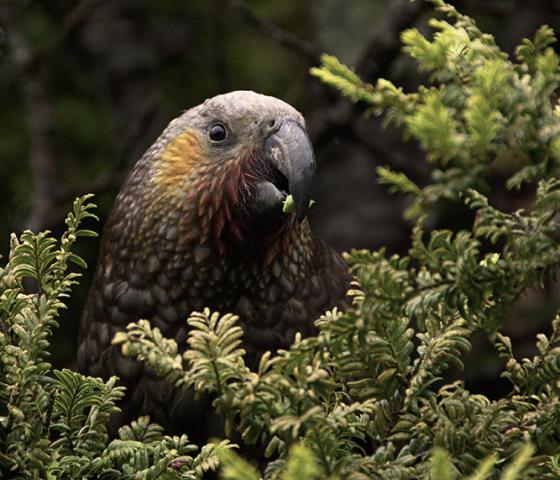
Nordic forest sector response
Whenever an industry or sector is highly dependent on nature, it can be expected that biodiversity is at the top of the strategic agenda. Given these dependencies, as well as an increased overall awareness, the forestry sector has been continuously expanding its activities to safeguard biodiversity in forest management and wood sourcing.
An example of this is Finsilva, a major forest company in Finland. According to Finsilva CEO Juha Hakkarainen, biodiversity is a key component of its strategic mission to generate economic, social and ecological wellbeing from natural capital. Many large forest industry companies, such as UPM and Stora Enso, have included biodiversity in their strategic priorities.
Biodiversity related targets have been set and are monitored by a number of businesses. Sami Oksa says that UPM has set the Net Positive Impact (NPI) for the biodiversity target for its own forests in Finland and Uruguay. In Finland, UPM monitors several elements of biodiversity such as the number of broadleaf trees and the protection of valuable habitats.
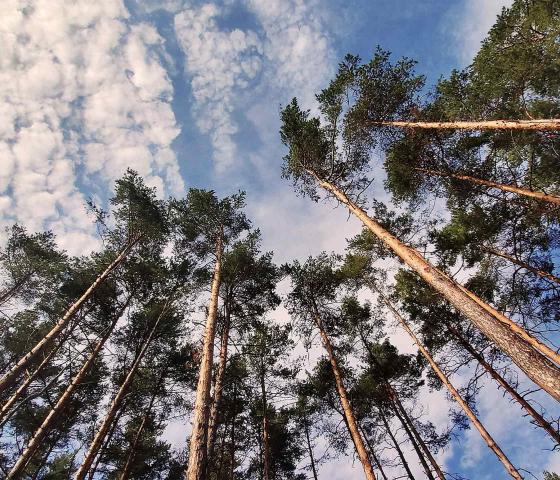
Smaller companies are supported with industry specific biodiversity programmes. For instance, the Finnish Sawmills Association recently published good practice guidelines to account for biodiversity in wood sourcing for its members, independent sawmills.
Voluntary protection of forest areas with high biodiversity values or increasing the set-aside areas are frequent measures to protect biodiversity. In Finland, this has been greatly supported by government funded voluntary conservation programmes, such as Metso and Helmi.
The measures adopted by the forestry companies in their forest management and wood sourcing operations vary in degree and scale. The most advanced practices in the sector go beyond biodiversity requirements set by legislation, regulation and forest certification.
Examples include:
-
Increasing the share of hardwoods (diversification of species mix), the volume of deadwood, the rate of prescribed burning and the volume of old trees
-
Avoidance of biodiversity-rich forest types and key habitats
-
Diversification of age and forest structure
-
Biodiversity price premiums for wood (compensation for the forest owner)
-
Restoration
-
Biodiversity related guidance and services to third-party owners
-
Planning to increasingly consider the interconnectedness of ecosystems and the transfer of key species to new locations
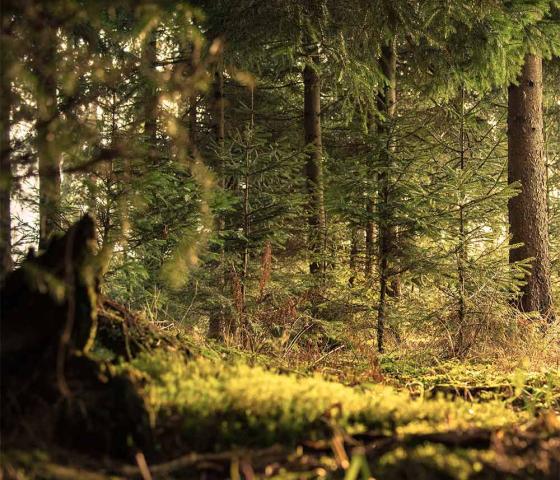
Sami Oksa tells us:
UPM has already been working to increase the biodiversity value for over two decades. In this timeframe, we have taken many actions that go beyond regulatory requirements.
"In the beginning, we carried out a valuable habitat and biodiversity survey in the company-owned forests in Finland that formed a basis for our actions. Later on, we set several targets, like doubling the number of broadleaf trees in UPM forests, and collaborated on many projects with stakeholders for biodiversity protection, such as a guide to protect one of our most threatened bird species, the white-backed woodpecker, in commercially managed forests.
"Our actions take place in all forests owned by UPM and they are promoted in privately owned forests so we may say that the scale stretches to all our sourcing," reports Sami Oksa.
The Nordic model
The Nordic forestry model is mainly based on even-aged management in which a tree generation is harvested at the end of the rotation, with a significant one-time impact on the existing nature. In comparison, the Central European model includes selective harvesting in which the frequency of intervention is higher and the area impacted is typically larger.
Consideration of frequency and strength of harvesting operations is increasingly on the agenda of the Nordic forestry sector, principally from the biodiversity but also from the carbon storage perspective. The main objective is to find a fit-for-purpose and site harvesting regime.
Juha Hakkarainen states that Finsilva applies increasingly uneven-aged forestry regimes on peatlands.

According to Hakkarainen, Finsilva voluntarily protects forest areas and keeps broadleaved trees in their forests. The preserved tree species include aspen, goat willow, bird cherry, mountain ash and alder. These species are important for biodiversity and will not be harvested. The company also restores wetlands and water streams. In the regeneration phase, more focus is put on the mixed-species cultivation of softwood, pine and spruce.
Road ahead
In recent years, the forest sector has been gradually upscaling its biodiversity efforts, which has led to some improvements. However, the pressure remains and requires further commitments and piloting of new ideas. One such pilot project is the UPM Forest Action programme that takes a holistic view of responsible forest management. One of the responsibility initiatives of the programme aims at improving biodiversity through the effective management of deadwood.
In the absence of a global biodiversity framework, one of the greatest challenges in sustainability management, in general, will be the development and refinement of indicators, metrics and methodologies to measure progress towards the targets that have been set by the companies. As pointed out by Juha Hakkarainen:
Market values and mechanisms for biodiversity accounting may become highly relevant and need to be tied in with these metrics.
Initiatives such as the Task Force on Nature related Financial Disclosures and the Partnership for Biodiversity accounting Financials will likely play a significant role in this development, as they are being pushed by a lobby of leading global industry representatives and market service providers.
Biodiversity is the next frontier in sustainability management. And as with many frontiers, a lot of investments, experiments and tests are needed to find the right solutions. However, with uncertainty also comes opportunity, and companies who are willing to act now rather than later will stand a great chance to shape the ways out and solutions to one of the greatest environmental crises of our time.
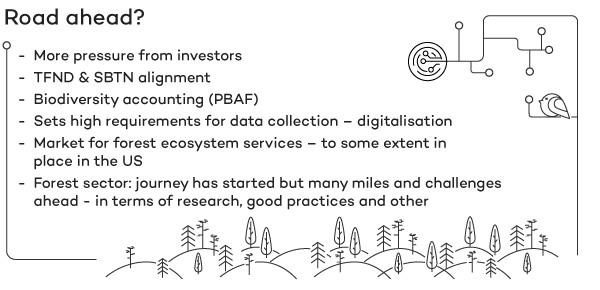

Bioindustry Management Consulting
Our service offerings from corporate strategy to design of processes and from market insights to operational efficiency backed up by an understanding of best practices, detailed in-house databases and analysis led by experts in the field ensure your outstanding performance. We want to be your trusted partner.
